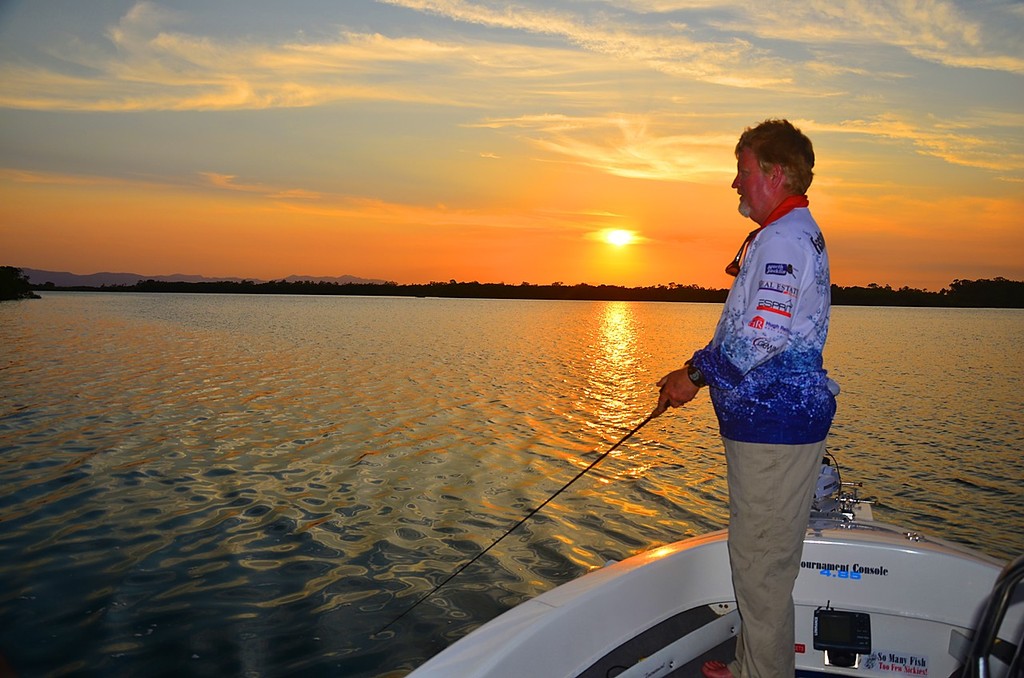Finessing the big three
by Lee Brake on 28 Jan 2013

As with most fishing styles, if you can tie it in with dawn or dusk, you can expect to increase your success. Lee Brake
This week, Lee Brake looks at the reason why many north Queensland anglers are switching to finesse techniques, more often associated with southern bream fishing, for species such as fingermark, mangrove jack and javelin fish (grunter).
Australian finesse soft plastic fishing was pioneered in the densely populated southern waterways where anglers needed a way to outsmart the heavily targeted local bream and flathead populations. In the north, amongst sport fishes, this 'finesse' style was largely looked down upon for many years, however, as boat ownership spreads and more and more pressure is put on northern estuaries, anglers are quickly discovering the advantages of techniques you'd usually associate with breaming.
We are realising that the predominately used technique involving 30lb baitcaster combos and diving minnows is not a 'one size fits all' approach. Sure, it might catch you plenty of barra, but are there better ways to target those other prestigious northern species? You bet your bottom dollar there is!
The big three top bycatch species, mangrove jack, fingermark and grunter, have feeding habits that make them much more susceptible to finesse fishing with soft plastics. These fish are veracious bottom feeders and are just as likely to be found holding on rock bars and rubble bottoms as they are around snags. They'll patrol these areas looking for crustaceans like shrimps, crabs and yabbies and while they will pick off any herring or mullet which dither in the area, these are not their primary target. This means that soft plastics are a much better option.
A small three to five inch soft plastic jerkshad, shrimp imitation, crab or curl tail will work much better than a hard-body. But lure choice is far from the only, or even the most important, factor to consider. Natural presentation is critical. These fish, as well as others like flathead, bream and golden trevally, move with the tide and are most active on tides with noticeable movement. This means that you need to firstly have a lure with just the right weighting and presentation to ensure it gets into the strikezone naturally, and secondly, that you are at the right places at the right time.
This is not an easy feat to achieve and experience is the greatest teacher. However, as a rough guide, I like to fish the bottom half of the tide. That means start fishing half way through the run out and focus on any rock or rubble near the mouth of the creek. Fish like jacks and fingermark love this kind of country as it allows them to intercept bait being washed out with the tide. Then, as the tide falls towards the bottom, I like to find a prominent hole or deep corner to work, preferably with a nearby rock bar. This will be the last holding point for bait and fish that have moved out of the nearby mangroves. Don't be surprised though if they don't bite straight away; the important thing is to be there for the first kick of the incoming tide. This will be the trigger and will see those big three come on the chew! Once the bite dies off here, I will often push back out towards the mouth and focus my attention on any deep rock or rubble in the main channel or hole at the creek mouth. Fingermark and big grunter will often hold at such spots over the top of the tide and the last of the run-in can be a hot bite.
Obviously a good sounder is important and one with enough pixels to identify changes in bottom structure will help you a lot! I also prefer to use an electric outboard to work these areas rather than anchoring. As for the business end of things, you'll want a range of jigheads from almost weightless right through to about three quarters of an ounce. Be pedantic about jighead choice. If it's too heavy to look natural you'll often not get a look in, and if it's too light you won't be staying in the strikezone. Light braid and leader will also help with this and will mean a much more natural presentation. I like 10lb braid with 20-30lb leader and a 2-5kg 7' graphite spin stick and 2500 size reel. Lure choice matters less (I like the Berkley Gulp, Zman and Atomic ranges), but make sure your action matches the imitation. For example, a 'leggy' crab or yabbie imitation will work better with slow rises and falls of the rod tip, whereas a shrimp or jerkshad will require short, fast twitches followed by a pause.
Well folks, hopefully that has given you some food for thought. Next time you are heading up the creek luring, why not throw in a light spin stick and some softies. Go a little finesse. I guarantee you won't just do it the once!
If you want to link to this article then please use this URL: www.sail-world.com/106035